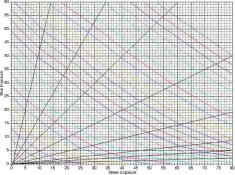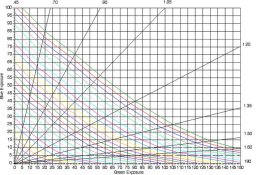nwilkins
Member
Hi everyone, just wondering if there is a rough rule of thumb that exists if you are split-filter printing and you have a work print which needs a little more contrast both in the blacks and in the highlights. In other words, the 00 time needs to be reduced and the 5 time needs to be increased.
Is there any way to calculate the degree of change for both exposure times which would still give roughly the same overall print brightness? Or do I just have to go back to the beginning and calculate new times for both filters again using test strips?
Maybe thinking in terms of stops would work (ie reduce 00 by a quarter stop and increase 5 by a quarter stop) but in instances where one time is long and one is short it seems like using stops wouldn't make sense. ie 24s (0) and 4s (5) will be a much lighter print than 48s (0) and 2s (5).
Is there any way to calculate the degree of change for both exposure times which would still give roughly the same overall print brightness? Or do I just have to go back to the beginning and calculate new times for both filters again using test strips?
Maybe thinking in terms of stops would work (ie reduce 00 by a quarter stop and increase 5 by a quarter stop) but in instances where one time is long and one is short it seems like using stops wouldn't make sense. ie 24s (0) and 4s (5) will be a much lighter print than 48s (0) and 2s (5).












